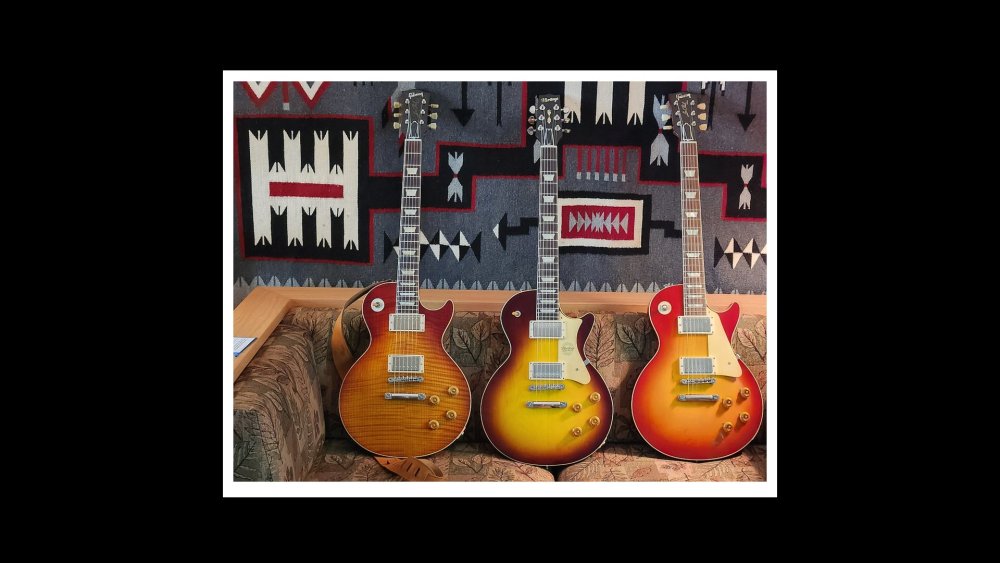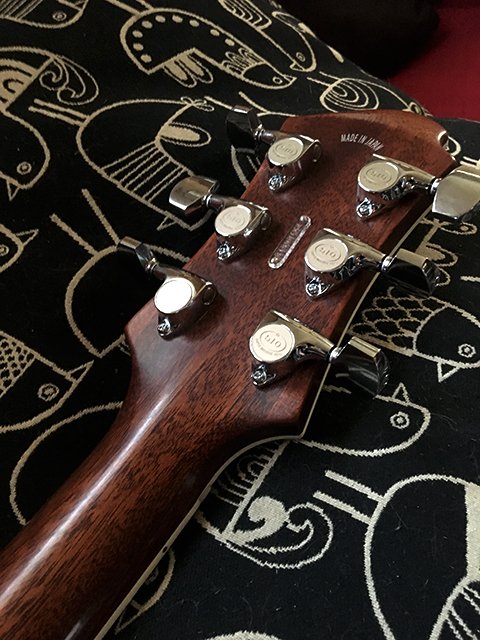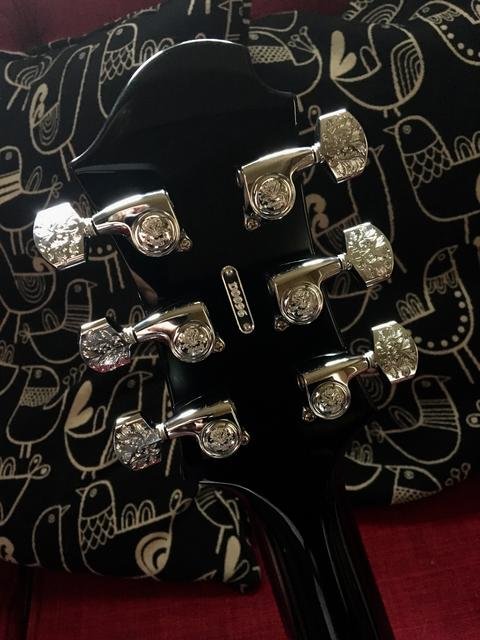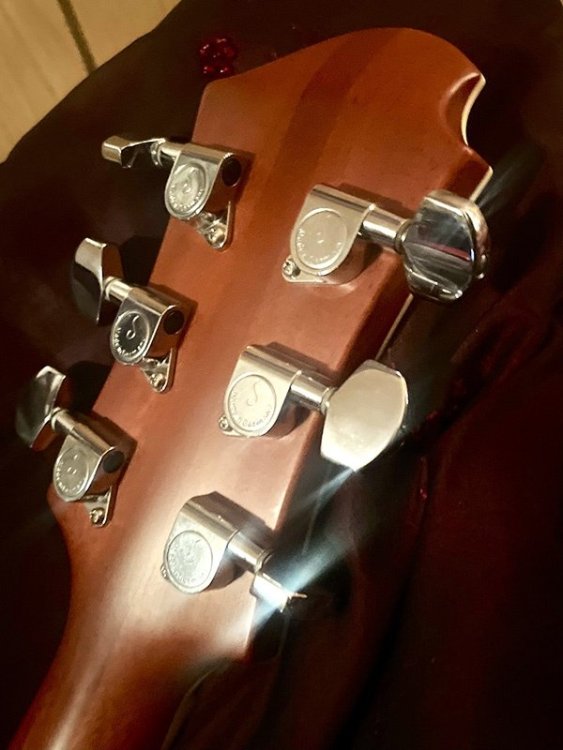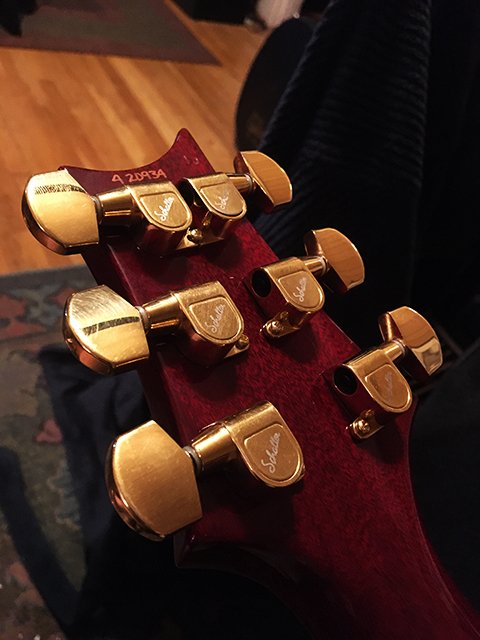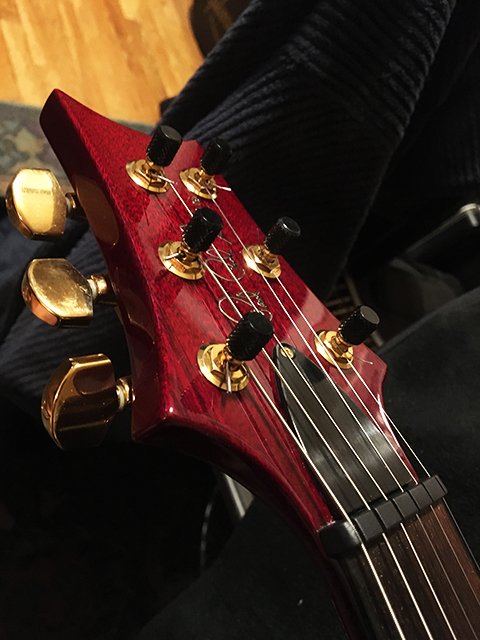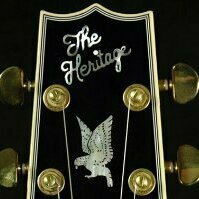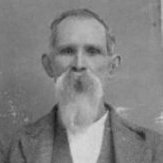All Activity
- Today
-
Oh yes. That looks like a whole week of fun and gains. Happy NGDs!
-
I believe they were the 101s, whatever they claim to be PAFs. I primarily play through Metropoulos remakes of Marshall 1959 and/or JTM45-100. The Imperials are a far better pickup IMHO. I was getting noise through the throwup 101s and was told by the owner that I had to pay to assess the defective product that is “guaranteed for life.” I’ll never use their crap again. It seems to me that I pulled 101s from a H-150LW and improved it with HRWs
-
- Yesterday
-
How the guys that work there avoid hearing damage is beyond me. That is one noisy environment.
-
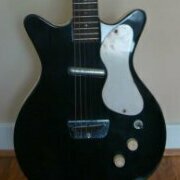
Some Recent Live Shots/Shameless Self-Promo
Genericmusic replied to Gtwibs's topic in Heritage Guitars
-
I got the impression that the "factory special" was a Sweetwater spec'd guitar. The Lollar PAF and jumbo frets vs the CC spec 225 and Medium Jumbos frets. Plain top vs figured top. I would guess they move enough that they could specify a factory run, a bit like Wildwood does with their "Wildwood Spec" guitars.
-
Just curious, but what set of Throbaks did you have installed, and what was it that you didn't care about them? The reason I ask is because I'm thinking of installing a set of Throbak SLE-101s into my H-150 CC goldtop, and it happens to be a set that I've always liked in the past. Of course, a 575 is an entirely different beast than a 150, so I can understand why the Imperials might be preferred for that guitar.
-
Congrats on the new guitar purchases! There's certainly nothing wrong with a nice plain top regardless of brand! Also, I've mentioned this before, but the bridges on these new H-150s and other Custom Cores have been upgraded to the more traditional zamac/brass tune-o-matic style bridge and, in my honest opinion, they're vastly superior tone-wise to the Pinnacle bridges that were installed up until 2025. They may not be locking, but the materials do matter! Can't wait to hear how you like the new guitars!
-
For those interested, this is how the H-535s are put together. You can see the center block, how they add the kerfing, and how the top is made and curved. This is from almost 10 years back, but the process is the same now. It's not a process that would be done by CNC.
- Last week
-
Schaller M6 tuners on Heritage H150CC....
hopkinwfg replied to hopkinwfg's topic in Heritage Guitars
@rockabilly69 nice prs !! But i guess mine is legit schaller M6 cant be wrong it came with the white package box... and the regular schaller S stamp at back of the tuning housing... perhaps on the pegs i wont not say sharp but rather pointy? Its just not ad comfortable to handle compares to grover type tuning buttons ? -

Schaller M6 tuners on Heritage H150CC....
rockabilly69 replied to hopkinwfg's topic in Heritage Guitars
Pictures, cause people like pictures... Gotoh 510 standard 18:1 Gotoh Luxury Engraved 510 21:1 Schaller M6 Schaller M6 top locking back view Schaller M6 top locking top view... -

Schaller M6 tuners on Heritage H150CC....
rockabilly69 replied to hopkinwfg's topic in Heritage Guitars
I've switched between Gotohs 510s and Schaller M6s, for both aesthetic reasons and for different tuning ratio, 21:1 on the Gotoh 510, and cannot hear a difference. I personally love M6 tuners. I have them on a PRS and 3 Zemaitis guitars. You sure you got genuine M6 tuners, I've never heard of sharp buttons. -
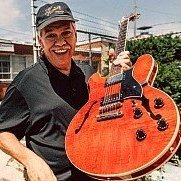
Schaller M6 tuners on Heritage H150CC....
TalismanRich replied to hopkinwfg's topic in Heritage Guitars
I've only changed out one set of tuners on all of my guitars. A few of the original Grovers on the 535 were getting tight, so I swapped to a set of Grover locking tuners. I didn't notice any change in tone or sustain. The improvement was merely in tuning and easier string changes. I can change picks and hear all kinds of differences. I've changed strings and heard differences. For sure there is vibration going on there... clip on tuners work even with fretted notes. I wonder though, how much of that vibration gets all the way back down the string and into the pickups from the headstock. Or maybe I just don't worry about minor changes. I'm more likely to twist a knob and do gross changes. -
Sorry to hear of your trouble with the Schaller tuners! This scenario reminds me of a time back in the '70s when there was a huge debate about installing heavier Grovers on Norlin-era Les Pauls. Of course, at the time Gibson was installing those shoddy chrome tulip tuners that no one cared for, and everyone was raving that not only were the Grovers far superior, but the shear mass of the tuners themselves helped to give the guitars better tone and more sustain, or at least that was the claim. I don't recall how much of a tonal difference they really made, but I do find it interesting that modern-day Gibson Les Paul Historic Reissues continue to feature lighter-weight Kluson-style tuners. Rarely do we see anyone replacing them with the heavier Grovers or Schallers these days, but I'm sure there are exceptions. That said, I think we posted about this before, correct? Anyway, I decided to try the Gotoh SG381 tuners after reading the reviews that Kuz and a few others had written here. They're a direct drop-in replacement for the Heritage tuners, and I honestly didn't notice a bit of a tonal change in the guitar. I also tend to be super picky about what I'm hearing out of a guitar, too. The biggest difference that I noticed was that the tuning quality of the Gotohs was far superior to the Heritage tuners, so I've never felt any need to look any further. Plus, they're relatively inexpensive: https://www.amazon.com/dp/B012EBV47A?ref=ppx_yo2ov_dt_b_fed_asin_title
-

Schaller M6 tuners on Heritage H150CC....
DetroitBlues replied to hopkinwfg's topic in Heritage Guitars
Now that makes sense, I've heard about some problems with the tuners, I've had my Heritage H150 for a couple years now without issues. I gig my H150 regularly and hardly ever have to adjust. But part of quality is consistency, if there is a variance between one set of tuners to the other, there is a quality issue. I've had many Heritages over the years, one of which is over 40 years old and still has the same Grover tuners on it that have no issues. -
Schaller M6 tuners on Heritage H150CC....
hopkinwfg replied to hopkinwfg's topic in Heritage Guitars
Ohh the stock tuner sucks lol its not as fine tuning up... at times i experience tuning up and winding up not consistant .... and the stock tuners bushing washer and bushing on my H150CC has already turn rusty... am from singapore and humidity is a big challange...i did some cleaning thou and back on... i wasted 100 bucks venturing on schaller M6.... ouch.... -

Schaller M6 tuners on Heritage H150CC....
DetroitBlues replied to hopkinwfg's topic in Heritage Guitars
I cannot help but wonder if lack of sustain contributes to a darker tone? Consider the strings contact the nut to the bridge, I wouldn't think it makes a difference either with the tuners unless the original tuners absorb some of the vibration? There is also the idea behind the tailpiece and the weight and type of metal used impacts the tone. Since I seldom play clean enough to notice such nuances, it doesn't really impact me. If I'm playing clean, I'll have some sort of modulation going, delay, reverb, chorus all of which impacts the tone. Of course, when playing dirty, I really don't notice because I'm hearing more of the amp and pickups more than anything else. Curious though, why did you change the tuners out? I have the Heritage branded tuners on my H150 standard but only considered swapping the tuners for locking tuners for quick string changes. However, I think I need to learn the luthier method of stringing up a guitar instead of the loop, pull, and bend over the string method. -
Gosh... the Murphy lab rosewood board looks terrible... The Heritage H150 custom shop just looks richer more quality.... and hell the body back and neck on my H150CC tobacco sunburst looks tighter in the grain no idea how probably their wood prep? Or its naturally selected to be this... honestly i own H150CC and i still like to own 1 more .... regretted getting the H150... the quality starts at the Custom core line !! I have a soft spot for Heritage ever since i gotten the custom core... i just hope custom core line can include a nicer 5As 3D flame top option and tortise shell type side dots !! Gibsons go 2000s era their body woods just seems more uniform and tighter..... i normally hunt for the special madagascar board ...
-
Sounds like you have a nice pair of singlecuts coming your way, congratulations! When you go all in, you go all in! Going back to Heritage choice of Lollars, Heritage has a relationship going back a long time with Lollar pickups as most of their P90 (non-custom core) guitars use Lollar P90's. Seymour Duncans, while a fabulous pickup manufacturer, are common, everyday mass-produced pickups unlike the "boutique" brand like Lollar. Since this H150 is a Custom Core model whose pickups are normally hand-wound inhouse by Rob Dolittle (cool dude to talk to at PSP!) they are swapped out with the top-of-the-line Lollar Imperials. Not having a beautiful flame top is bummer for the cost, but also for a '58 Plaintop look, its spot on. Hope you like them both!
-
Schaller M6 tuners on Heritage H150CC....
hopkinwfg replied to hopkinwfg's topic in Heritage Guitars
@bolero ohh yes they weight different imo the schaller M6 seems to be slightly heavier compares to the original... schaller M6 no doubt felt more quality when touch but the sharper edge of the tuning buttons felt sharp....The original feels cheaper but tone rings better to my ears the tuning buttons ala grover type feels more comfortable .... In this expect i dont know if a gotoh could share same similar tonality for tone respect to the original.... Else i might dismantle the original and swap the gears inside the tuners i guess the tone has alot to do with the coating and materials used on for tuning shell well i been a superstrat guy for all the while and its my first time chasing tone ever since i gotten a gibson Rs and since ever gotten myself a H150CC having coming to this extend in tone chasing... -
are they the same weight? heavier tuners will affect sustain & sonics, weight makes a difference remember those weights they used to sell, people would attach to the headstock?
-
Suggest that if ya really going into the gibby path which they are indeed more vintage accurate but if ya like the less pricey LP heritage will be ya thing ... both are high quality instruments on the wood package but with gibson ya get more hardware goodness still... Forget about murphy labs they are too far fetch on price... getta well used R8 from their 2007 2004 2003 era and if your lucky u could spot a special madagadcar board which they fetch warmer tone


